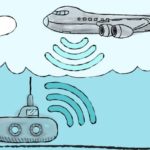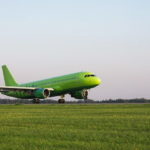Faradair has announced a drone variant of its turboprop-powered BEHA M1 (Bio Electric Hybrid Aircraft), designed specifically for firefighting.
Faradair says the BEHA M1-AT (Air Tanker) is a natural progression from the BEHA M1, which was announced at Farnborough Airshow last month.
Powered by a 2000-horsepower turboprop engine (yet to be finalised), the BEHA M1-AT will provide firefighting services with an autonomous aircraft, removing the risks to a manned crew.
BEHA M1-AT
Faradair says the BEHA M1-AT could be especially useful for tackling the growing number of forest fires as well as reducing the associated costs by reaching fires faster, before they can get out of control.
The BEHA M1-AT has an 11-metre wingspan and a 10-tonne payload capability. Faradair says this “offers the operator an opportunity to acquire a fleet of aircraft, for a fraction of the acquisition and operational costs of helicopters, flying in rotation to combat the smaller fires and to prevent them becoming larger fires.”
The aircraft has a unique ‘triple box-wing’ configuration, allowing extremely short take-off and landing capability whilst also allowing the aircraft to lift large payloads with hybrid flight capability if required.
BEHA can operate from any surface, in confined spaces with protection of the propeller in the rear duct, lessening the risk of Foreign Object Damage (FOD) during payload delivery runs. The all-carbon composite airframe is lightweight and extremely strong, allowing for larger payloads to be carried, making it perfect for anti-fire operations.
Multi-role
Neil Cloughley, Managing Director of Faradair, said: “We have always said that our new BEHA aircraft platform is focused more on multi-role functionality than specific focus in one class of flight (Urban Air Mobility) and this firefighting drone configuration really highlights that capability. Obviously the ability to carry retardant also opens the opportunity for refuelling in the military environment, possibly negating the need for resupply fuel tracks or even low-cost air-to-air refuelling option for the F35B from carriers without ‘cats n traps’.
“It is a genuinely exciting aircraft and we are now tweaking the design of the airframe to ensure the most volume can be achieved from the payload capability.”
He added: “With our management teams past experience of the UAV sector, the ability to offer a pure UAV variant of BEHA has always been something we were keen to pursue and with the growing number of fires, possibly related to global warming, we saw a great opportunity to ensure that every nation can afford airborne firefighting capability. We would be delighted to open dialogue with firefighting departments and commercial airtanker providers throughout the world to see how the BEHA M1-AT can fit within their portfolio of operations”.
The BEHA is currently undergoing design optimisation at Swansea University and scale model flights have been conducted from a satellite office in Sweden. Talks are ongoing with UK Government investment groups and new partners, Faradair says.
Watch our interview about the BEHA M1 here:

